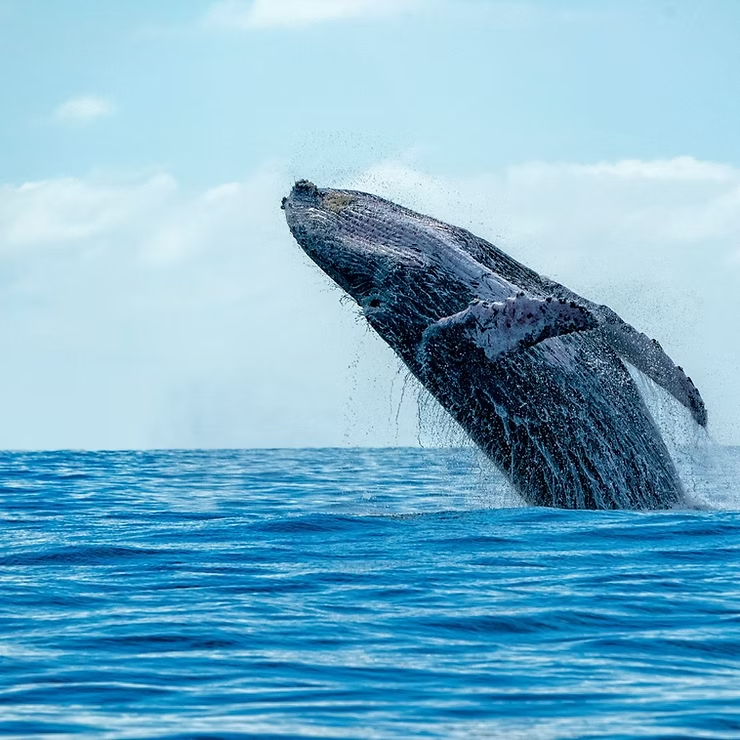Introduction: The Majesty of Whales
Whales are the largest animals on Earth and symbols of both mystery and resilience. Their biology, behaviors, and cultural significance have fascinated humans for centuries. From the depths of their evolutionary journey to modern-day conservation, these gentle giants embody the wonders of marine life and the importance of protecting our oceans.
Biological Marvels of Whales
The Mighty Heart and Lungs
The heart of a blue whale is as large as a small car, pumping over 200 gallons of blood per beat. Their lungs are equally remarkable, efficiently exchanging oxygen and storing it in muscle tissue for dives lasting over an hour. These adaptations make whales masters of the deep.
Skeletal Engineering
Whale skeletons showcase evolutionary design. Their streamlined spines enable powerful tail movements, while modified forelimbs act as flippers for steering. This structure balances immense size with agile swimming, proving that evolution has sculpted whales into efficient ocean navigators.
Oceanic Habits and Behaviors
Migrations Across Oceans
Whales embark on epic migrations, traveling thousands of miles between polar feeding grounds and tropical breeding sites. Humpback whales cover more than 5,000 miles, while gray whales travel up to 14,000 miles annually—an extraordinary feat of endurance and navigation.
Feeding and Diet
- Baleen whales: Filter krill, plankton, and small fish
- Toothed whales: Hunt squid, fish, and marine mammals
These dietary habits reflect their adaptability to diverse ocean habitats.
Breeding Grounds
Whales select safe, warm waters for birthing and nursing. Islands such as Pemba and Mnemba offer sanctuary for calves, underscoring the need to protect these critical nurseries.
Social Giants
Communication Through Song
Whales are acoustic artists. Humpbacks compose haunting songs, orcas use clicks and whistles, and these sounds travel vast distances. Communication strengthens bonds and coordinates complex behaviors.
Life in Pods
Pods are families guided by elders. Calves remain close to mothers, learning migration routes and survival skills. This social structure mirrors traditions of mentorship and shared knowledge.
Playful Interactions
Breaching, tail slapping, and spyhopping are common. These displays communicate, entertain, and reinforce social ties, reminding us of the intelligence and playfulness of whales.
Whales and Ecosystems
Ecosystem Engineers
Whales fertilize oceans with nutrient-rich waste, supporting plankton growth—the foundation of marine food webs. Their movements mix ocean layers, distributing nutrients across ecosystems.
Whale Falls
When whales die, their carcasses sink to the seafloor, creating “whale falls” that sustain diverse deep-sea life for decades.
Cultural and Historical Significance
Whales in Myth and Legend
Ancient myths—from the story of Jonah to Native American creation tales—cast whales as symbols of power, mystery, and guidance. Across cultures, whales embody wisdom and protection.
Modern Representation
Whales continue to inspire films, art, and literature. From Moby Dick to documentaries, they remain icons of awe and ecological awareness.
Conservation Challenges and Solutions
Threats to Survival
- Climate change disrupting habitats
- Ship collisions and fishing gear entanglement
- Noise pollution interfering with communication
Global Efforts
Organizations like Whale and Dolphin Conservation, The Ocean Cleanup, and local community projects are leading protection efforts. Their work ensures that whale populations recover and ecosystems remain balanced.
How Individuals Can Help
- Reduce single-use plastics
- Support sustainable seafood choices
- Join beach cleanups and awareness campaigns
Technological Advances in Whale Research
Tracking Movements
Satellite tags reveal migration routes and diving behaviors, guiding conservation strategies with precision data.
Listening to the Deep
Hydrophones capture whale songs and calls, allowing researchers to study communication and measure the impacts of human-made noise.
Conclusion
Whales are far more than ocean dwellers—they are guardians of ecosystems, symbols of culture, and testaments to evolution’s creativity. By respecting and protecting them, humanity not only preserves a species but also safeguards the health of the seas and the planet itself.

